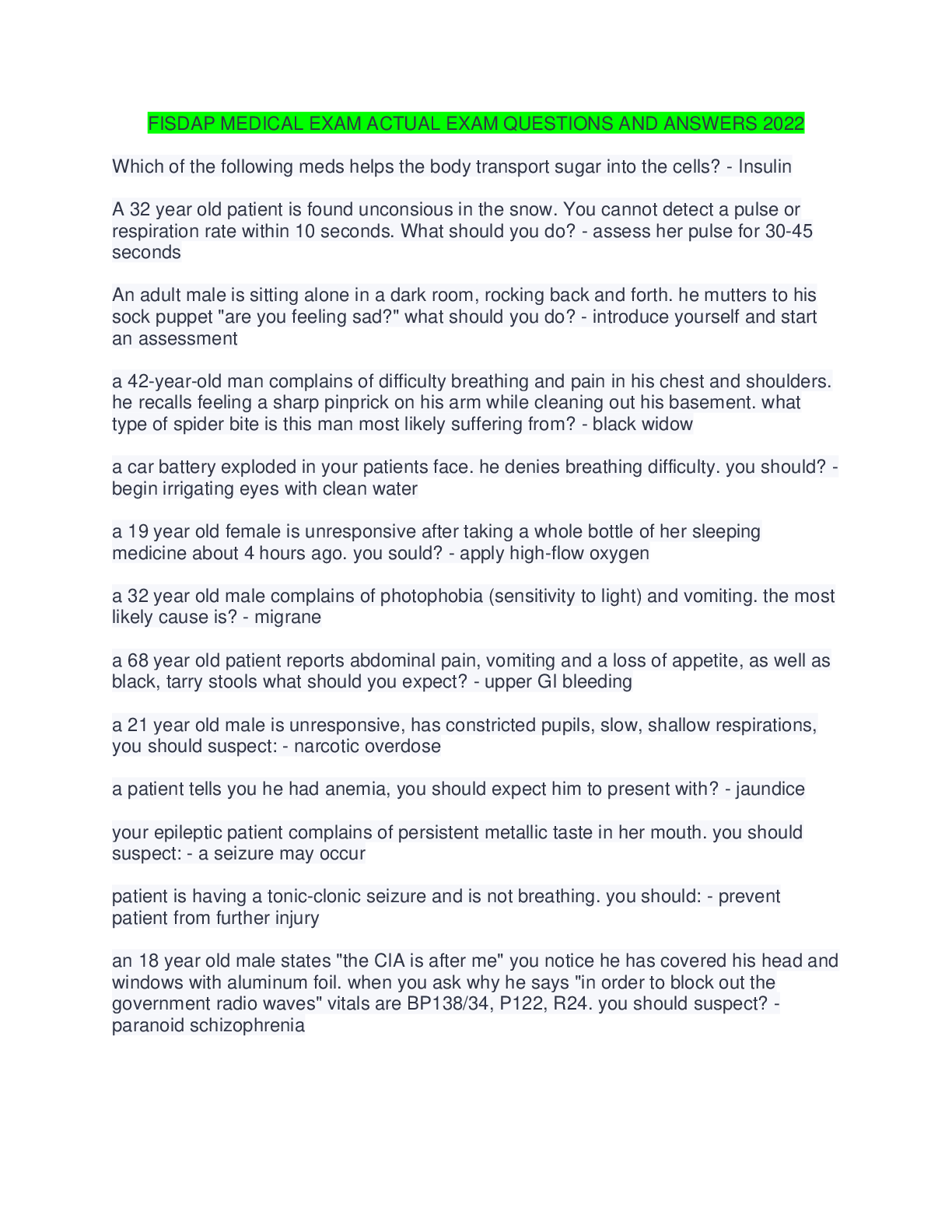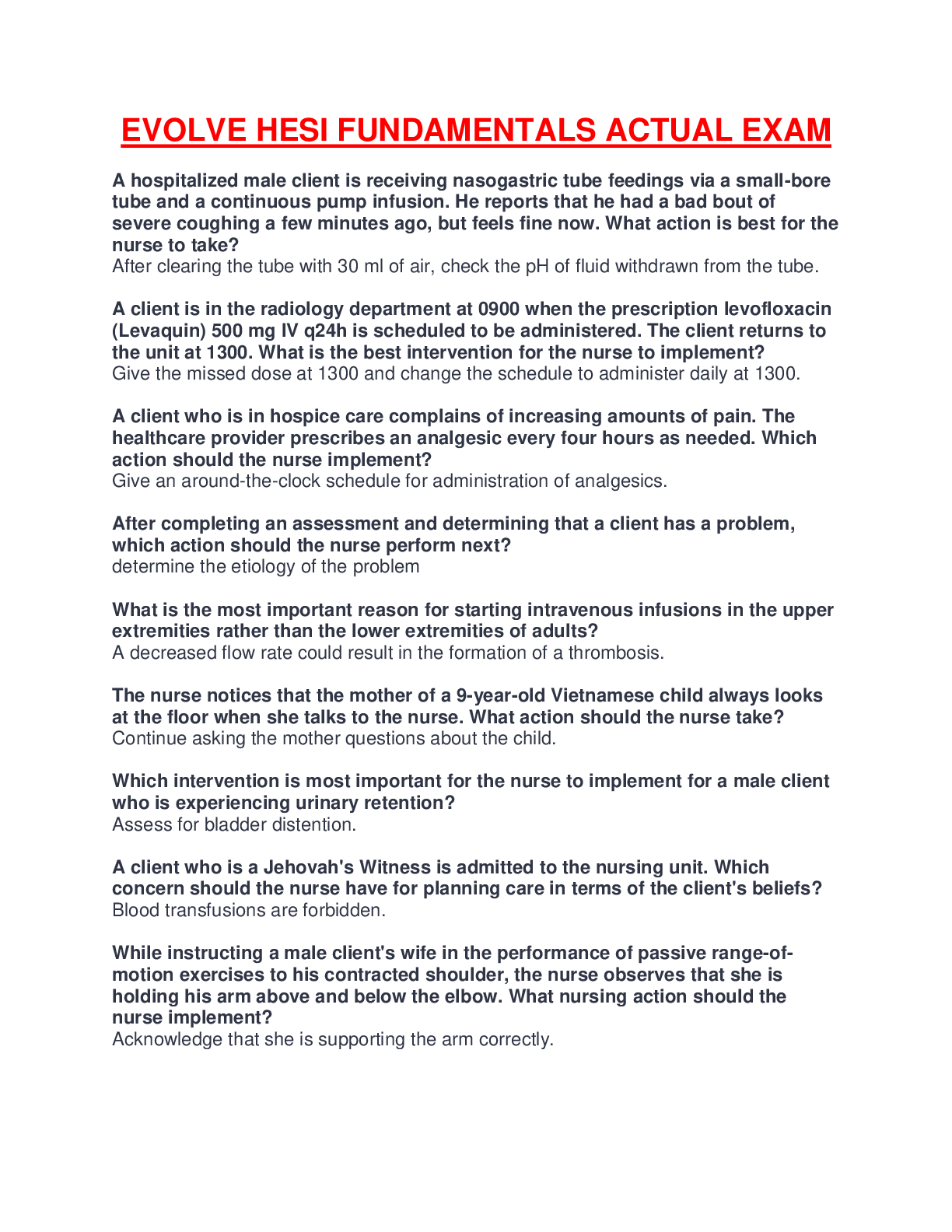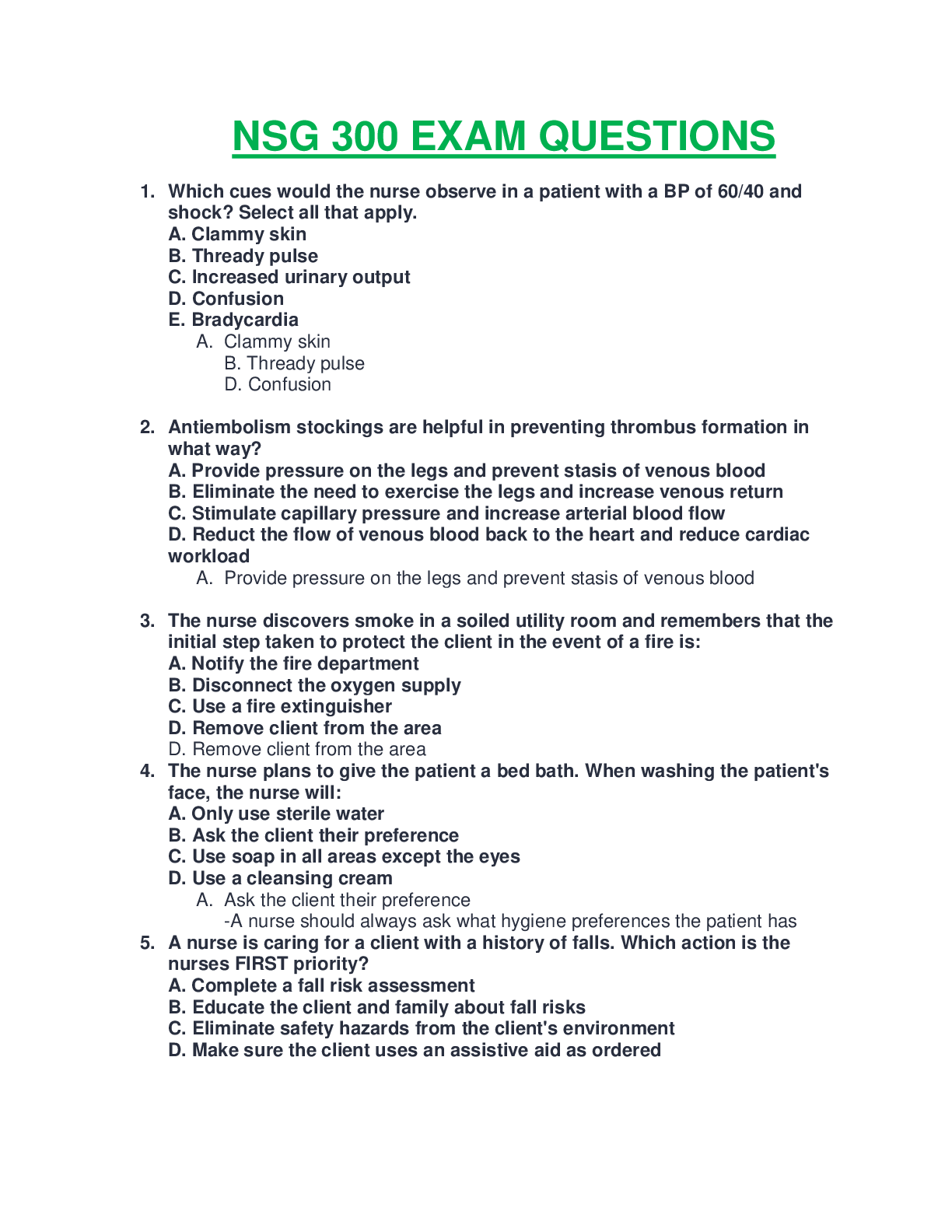*NURSING > EXAM > ATI RN Pharmacology Nursing Comprehensive Actual Exam Questions & Answers 2023 (All)
ATI RN Pharmacology Nursing Comprehensive Actual Exam Questions & Answers 2023
Document Content and Description Below
ATI RN Pharmacology Nursing Comprehensive Actual Exam Questions & Answers 2023-A client is prescribed phenobarbital sodium (Luminal) for a seizure disorder. The medication has a long half-life of 4 da... ys. Based on this half-life, the medication will most likely be prescribed A. once a day B. twice a day C. three times a day D. four times a day - A Rationale: Medication with long half-lives remain at their therapeutic levels between doses for long periods of time. Therefore, this medication can be administered once a day. A nurse educator is reviewing medication dosages and factors that influence medication metabolism with a group of nurses. Medication dosages may need to be decreased for which of the following (Select all that apply) A. increased renal excretion B. increased medication-metabolizing enzymes C. liver failure D. peripheral vascular disease E. concurrent use of medication metabolized by the same pathway - C & E Rationale: Liver failure can decrease metabolism and thus increase the concentration of a medication. This may require decreasing the dose. When 2 medications are metabolized in the same way, they may compete for metabolism, thereby increasing the concentration of one or both meds. The other answers involved increasing the dose of the med. A nurse is preparing to administer eye drops to a client. Which of the following are appropriate nursing interventions related to this procedure? (Select all that apply) A. Using medical aseptic technique B. asking the client to look up at the ceiling C. having the client lie in a side-lying position D. dropping medication into the center of the client's conjunctival sac E. instructing the client to close the eye gently - B, D, & E Rationale: The client should be instructed to look up at the ceiling to avoid the drop falling on the cornea and increasing intraocular pressure. The medication should be dropped into the center of the conjunctival sac to promote better distribution. They should close the eye gently to improve distribution of the med. Surgical aseptic technique is used & the client should be sitting in a supine position. A nurse is completing discharge teaching to a client who has a new prescription for a transdermal med. Which of the following statements by the client indicates understanding of the teaching? A. "I will clean the site with an alcohol swab prior to applying the patch" B. "I will rotate the application sites weekly" C. "I will apply the patch to an area of skin with no hair" D. "I will place the new patch on the site of an old patch" - C Rationale: Transdermal patches should be applied on an area of the skin that is free of hair to promote absorption of the med. A nurse is reviewing a client's health record and notes a new prescription by the provider to verify the trough level of the client's medication. Which of the following actions should the nurse take? A. have a blood specimen obtained immediately prior to the next dose of the med B. verify that the client has been on the medication for 24 hr before ordering a blood specimen. C. ask the client to provide a urine specimen after the next dose of the med D. begin administering the med, and obtain a blood specimen - A Rationale: To verify the trough level, blood should be obtained immediately before the next dose of the med. A nurse is preparing a client's meds. Which of the following are legal responsibilities of the nurse? (Select all that apply) A. maintaining skill competency B. determining the dosage C. monitoring for adverse effects D. safeguarding meds E. identifying the client's diagnosis - A, C, & D Rationale: Maintaining skill competency, using appropriate administration of med, safeguarding meds, like controlled substances, and monitoring for side effects/adverse effects are all legal responsibilities of nurses. A nurse should be informed about a client's diagnosis, but identifying the diagnosis and determining the med dose is the role of the provider. A nurse is reviewing a client's health record and notes a new prescription by the provider for lisinopril (Zestril) 10 mg PO everyday. The nurse should recognize this as which of the following types of prescription? A. single B. stat C. routine D. standing - C Rationale: This type of prescription is given on a regular schedule and is administered everyday until it is DC. A nurse is reviewing a new prescription for ondansetron (Zofran) 4 mg PO PRN nausea & vomiting for a client who has hyperemesis gravidarum. The nurse should clarify which of the following parts of the prescription with the provider? A. name B. dosage C. route D. time - D Rationale: This is not included and should be clarified by the provider. A nurse is orienting a newly hired nurse and discussing how to take a telephone prescription. Which of the following statements by the newly hired nurse indicates understanding of the discussion? A. "A second nurse enters the prescription into the client's health record" B. "Another nurse should listen to the phone call" C. "The provider can clarify the prescription when he signs the health record" D. "The 'read back' is omitted if this is a one-time prescription" - B Rationale: This should be done to prevent errors. A nurse on a medical unit is admitting a client and completing a pre-assessment before administration of medication. Which of the following data should the nurse include in the pre-assessment? (Select all that apply) A. use of herbal teas B. daily fluid intake C. current health status D. previous surgical history E. food allergies - A, C, & E Rationale: Herbal products can affect medications. Current health status should be reviewed because new prescriptions can cause an alteration in health status. Food allergies should be assessed to identify any potential interactions. Daily fluid intake and surgical history are important, but it is not part of the pre-assessment for medication administration. A nurse is assessing a client's IV site. Which is the following findings is indicative of phlebitis? (Select all that apply) A. tingling sensation below insertion site B. tachycardia C. palpable, hard mass above insertion site D. cool, pale skin E. pain at site - C & E Rationale: These are both indicative of thrombophelebitis. Tingling below insertion site is indicative of nerve damage. Tachycardia is a manifestation of fluid volume overload. Cool, pale skin is a manifestation of infiltration. A nurse manager is reviewing facility policies for IV therapy management with the members of his team. The nurse manager should inform the team members that which of the following techniques will minimize the risk of catheter embolism? A. perform hand hygiene before and after IV insertion B. rotate the IV sites at least every 72 hr C. minimize tourniquet time D. avoid reinserting the needle into an IV catheter - D Rationale: This can result in severing the end of the catheter and consequently cause a catheter embolism. A nurse is preparing to initiate IV therapy for an older adult client. Which of the following actions should the nurse plan to take? A. use a disposable razor to remove excess hair on the extremity B. select the back of the client's hand to insert the IV catheter C. distend the veins by using a blood pressure cuff D. direct the client to raise his arm above his heart - C Rationale: The nurse should use this technique because it reduces overfilling of the vein, which can result in a hematoma A nurse is caring for a client receiving dextrose 5% in water IV at 250 mL/hr. Which of the following findings are an indication of fluid overload? (Select all that apply) A. Hypotension B. bradycardia C. shortness of breath D. crackles heard in lungs E. distended neck veins - C, D, & E Rationale: These are all manifestations of fluid volume overload. Hypertension and tachycardia are present in fluid volume overload. A nurse in a clinic is caring for a group of clients. The nurse should contact the provider about a potential contraindication to a medication for which of the following clients? (Select all that apply) A. a client at 8 weeks gestation who asks for an influenza immunization B. a client who takes prednisone (Deltasone) and has a possible fungal infection C. a client who has chronic liver disease and reports he is taking hydrocodone D .a client who has PUD and takes sucrafate (Carafate) and tells the nurse she has started taking over-the-counter aluminum hydroxide (Amphojel) E. a client who has a prosthetic heart valve who takes warfarin (Coumadin) and reports a suspected pregnancy - B, C, & E Rationale: Glucocorticoids should not be taken by a client who has a possible fungal infection. Acetaminophen is contraindicated in a client with liver failure, this can result in toxicity. Warfarin is a category X med, which can lead to severe birth defects. The others are correct. [Show More]
Last updated: 6 months ago
Preview 1 out of 78 pages
Instant download
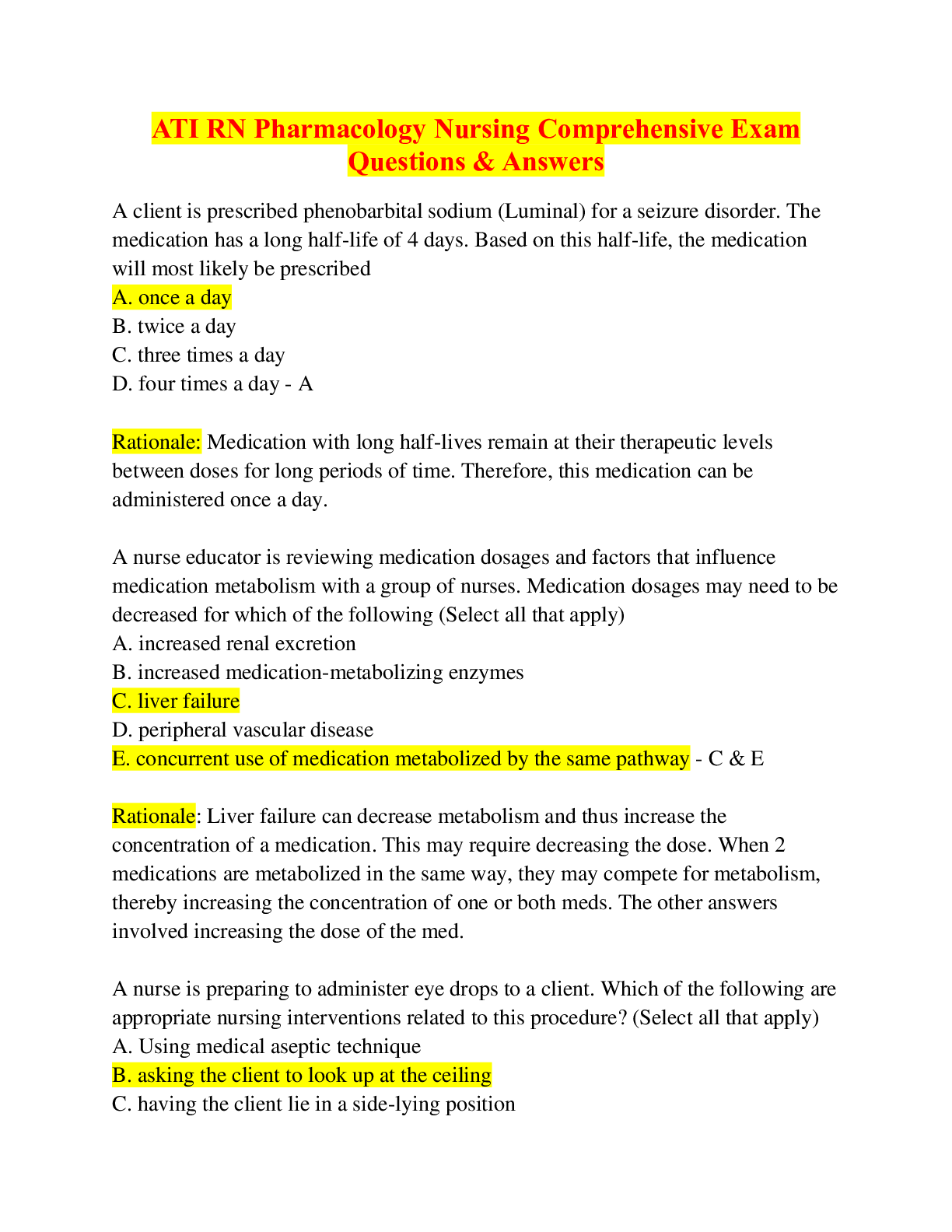
Buy this document to get the full access instantly
Instant Download Access after purchase
Add to cartInstant download
Reviews( 0 )
Document information
Connected school, study & course
About the document
Uploaded On
Nov 29, 2023
Number of pages
78
Written in
Additional information
This document has been written for:
Uploaded
Nov 29, 2023
Downloads
0
Views
56






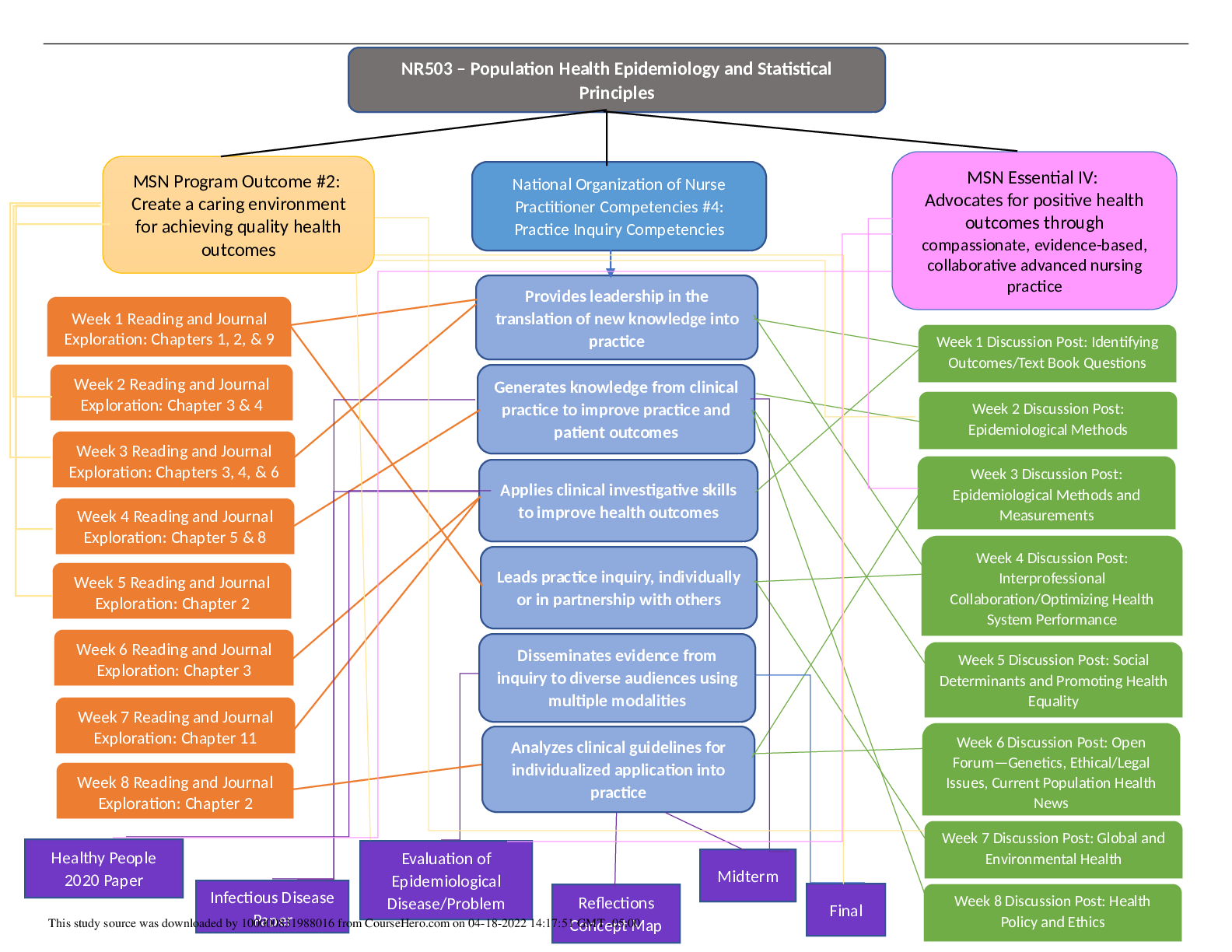

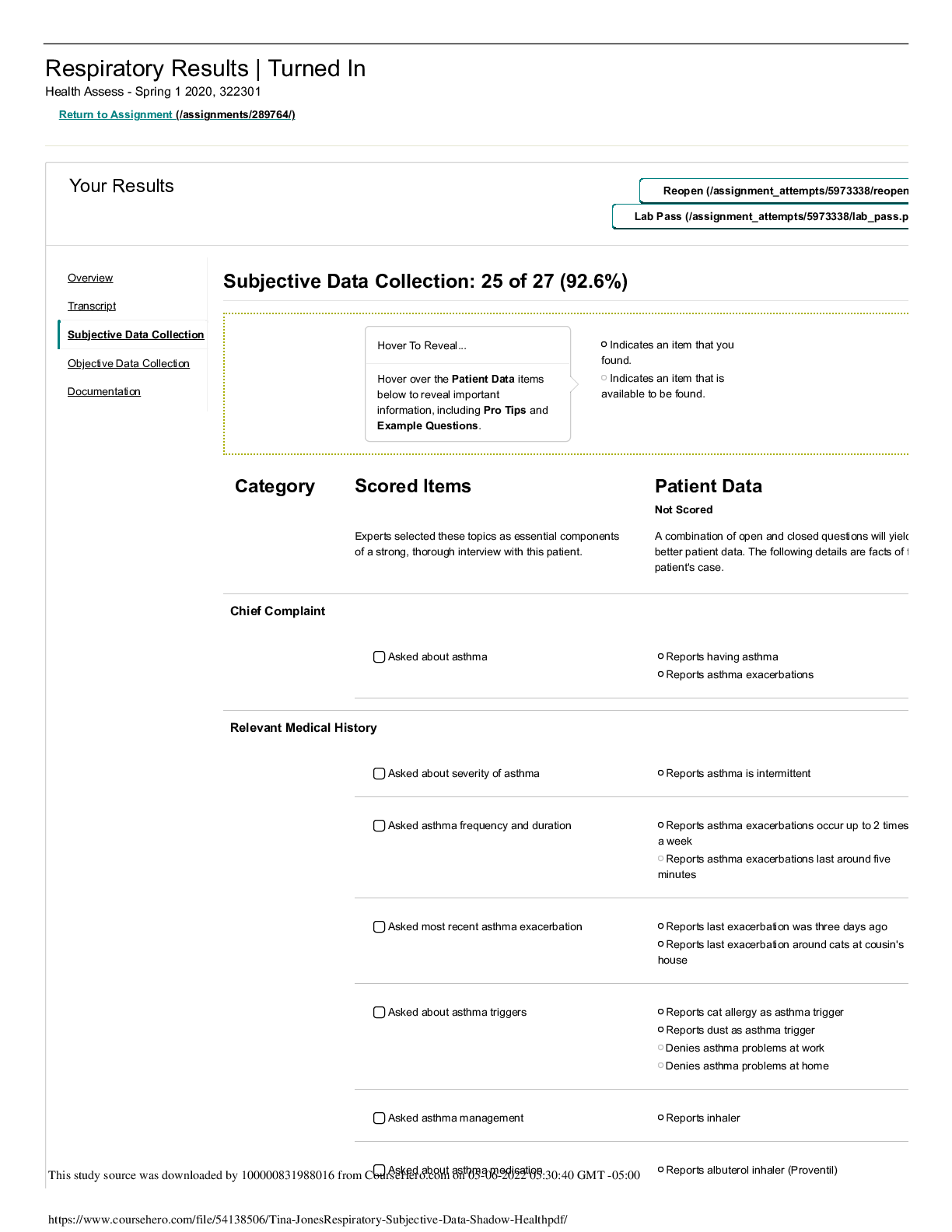
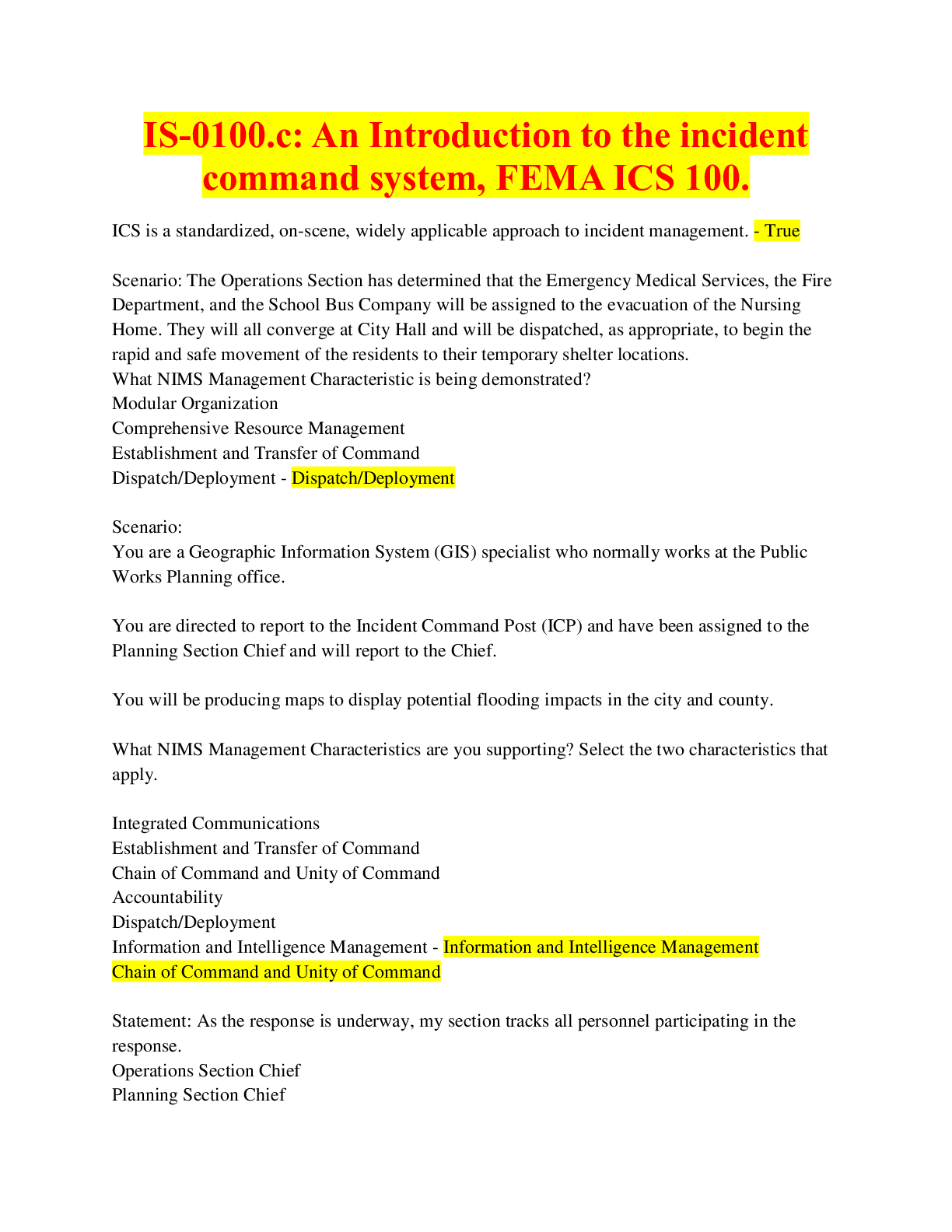




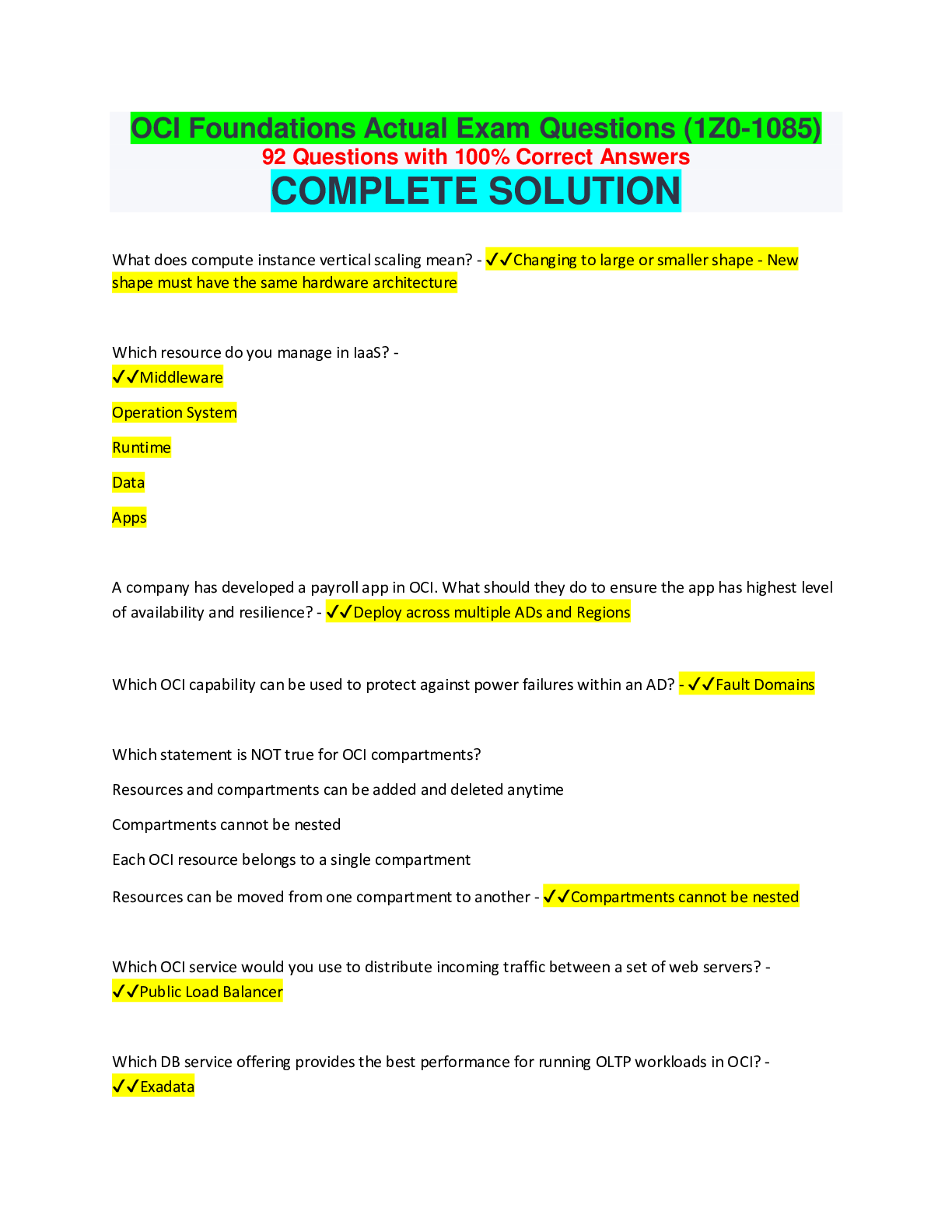
.png)

.png)
